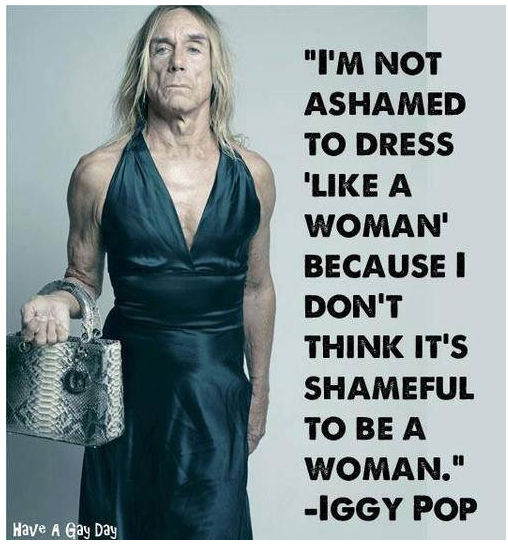When people talk about the LGBT community, they often only think of a small section of the community as it really is. Thanks to the landmark 2015 SCOTUS decision regarding gay marriage the conversation has officially opened up about gay and lesbian couples as well as igniting a season of gay weddings all over the country. Today, LGBT couples have more choice than ever when it comes to gay friendly venues, fashion and, of course, the iconic gay wedding rings. Thankfully, it’s also kick started a dialogue about transgendered people and those who simply don’t identify one way or the other.
Issues involving gender have become big news lately partly due to the higher profile of stars like Laverne Cox from Orange is the New Black and Chaz Bono. Tragic stories like Leelah Alcorn’s suicide and the infamous case of Brandon Teena have also brought the issue into sharp focus, reminding many that while great progress has been made in terms of acceptance and education, there is still a long way to go. Fortunately, people who don’t adhere to one gender or another are nothing new and these 10 people have never made a secret of the fact that men with be girls, girls will be boys and sometimes people just opt out completely.
10. Lady Gaga

When Lady Gaga first debuted on the music scene, it was after more than decade of songwriting for the likes of TLC, Brittney Spears and Cher. The first two singles from her debut album The Fame, “Just Dance” and “Poker Face”, rose through the Billboard charts and placed her firmly in superstar territory where she immediate set about making the most of her time in the spotlight. She’s used her fame and notoriety to support and promote charities that help homeless LGBT youth, advocated for body positivity and, of course, stretched the boundaries of fashion. More to the point, she has been the focus of rumors over whether or not she was born a man or a hermaphrodite for years (which she denies when she bothers acknowledging them at all) and has maintained a male persona, Jo Calderone, since 2010 and attended the 2011 MTV VMA Awards in drag.
9. Mae West
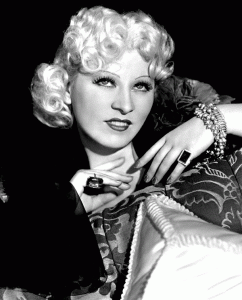
Mae West is perhaps the first well known celebrity to tease the press over allegations of being transgendered or even a hermaphrodite. Mae West was a larger than life celebrity of the 1930s and 40s with a career that reads like a timeline of the entertainment industry. She got her start in vaudeville, moved on to movies and radio and eventually worked on television and collaborated on rock and roll albums. She was a frequent target for censorship thanks to her trademark sexpot look and her regular use of sexuality in her humor. The Federal Communication Commission even got in on the act, deeming her performances “vulgar and indecent” and “far below even the minimum standard which should control in the selection and production of broadcast programs”. West was also the target of public debate over her true gender. Her outspoken manner and overt sexuality led many people to spread the rumor that she had been born a man or was, at the very least, a hermaphrodite. When confronted about the rumors West would often laugh and say “When I die, you are going to be very surprised!” In the end, it was revealed West was always exactly how she had presented herself – a woman who simply didn’t care about how people expected her to act.
8. David Bowie

When it comes to rock and roll stars, the Hall of Flamboyant Fame has no shortage of entrants. Mick Jagger, Elton John and Freddie Mercury all come to mind but David Bowie still reigns supreme. Bowie has never shied away from his Ziggy Stardust persona, complete with makeup, wigs, high-heels and more spandex than a 1982 Jazzercise class. Later, he went on to play in the iconic film Labyrinth, where he updated his Stardust look to become the oddly alluring goblin king. In the end, Bowie has settled down with his second wife, supermodel Iman, but has a long history of hopping into bed – and relationships – with both men and women. When asked about his sexuality he has simply responded, “I had a wonderfully irresponsible, promiscuous time.”
7. Eddie Izzard
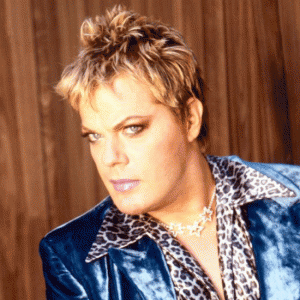
Eddie Izzard is a well-known comedian, famous for his roles in films like Ocean’s Thirteen, Mystery Men and Shadow of the Vampire. He’s also pretty well known for routinely wearing full makeup, high heels, skirts, dresses and other clothes normally associated with women. When asked about wearing ‘women’s dresses’ on an Australian television show, Izzard responded “These aren’t a lady’s dresses. They’re my dresses. They’re a man’s dresses. I bloody well bought them.”
6. Iggy Pop

Iggy Pop is another music icon who has transcended his original scene and has become a part of our national pop culture. Iggy has an impressive musical history and has been inducted into the Rock and Roll Hall of Fame but his infamy extends well beyond his musical talent. Pop has been featured in a slew of movies and televisions shows, making an appearance in everything from the Beavis and Butthead movie to Star Trek: Deep Space Nine. He’s also an avid activist and has thrown his weight behind organizations like PETA, Amnesty International and the Save the Music Foundation. He also has a long history of fluid sexuality and has played up his more flamboyant side, including his comfort in dressing in women’s clothes. He was arrested while wearing a dress and was a part of an iconic photoshoot featuring him in an evening dress which is often used alongside his infamous quote, “I’m not ashamed to dress like a woman because I don’t think it’s shameful to be a woman.”
5. Joan of Arc
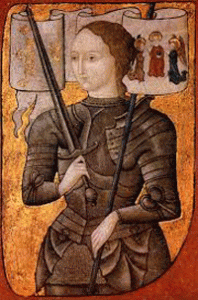
Most people know the basic story of Joan of Arc and are well aware that she dressed and acted as a man in order to be able to fight alongside her countrymen late during the Hundreds Years War. But Joan’s cross dressing went beyond necessity. In her article Clothing and Gender Definition: Joan of Arc, Susan Crane points out “Joan of Arc wore men’s clothes almost continually from her first attempts to reach the Dauphin […] until her execution twenty-eight months later. In court, on campaigns, in church, and in the street she cross-dressed, and she refused to stop doing so during the long months of her trial for heresy.” Modern scholars believe Joan may have had Androgen Insensitivity Syndrome, an intersex condition where women are born with all the ‘traditional’ hallmarks of being female but who are, genetically, male compete with XY chromosomes and undescended testes.
4. Christine Jorgensen
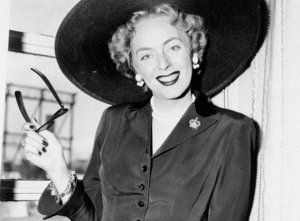
Christine Jorgensen was born as George William Jorgensen Jr. and grew up in the Bronx, New York before heading off the Army to fight during World War II. After the war, Jorgensen traveled and worked in various places eventually hearing about sexual reassignment surgery options available in Europe. Jorgensen made the trek and, in 1951, began the series of surgeries which led to her headline making transformation. The New York Daily News ensured her celebrity when they ran a front page story on her in 1952 under the headline “Ex-GI Becomes Blonde Bombshell”. Jorgensen took her celebrity status in stride, appearing on a number of talk shows and using her notoriety to advocate for transgendered people, no small task in 1950s America. Jorgensen never wavered, however, and never shied away from confrontation. In 1970, she publicly demanded an apology from then Vice President Spiro Agnew after he characterized a politician as “the Christine Jorgensen of the Republican Party”. Shortly before she died in 1989 Jorgensen was asked how she would characterize her influence on the sexual revolution and she said she had given it a “good swift kick in the pants”.
3. Flappers
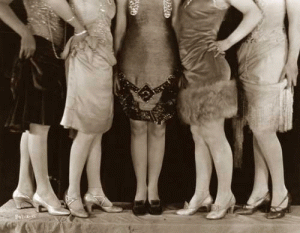
While not strictly a single person, Flappers deserve their own entry onto this list as, together, they essentially changed the landscape of female fashion and gender roles in the 1920s. Today Flappers seem a bit quaint with their bob haircuts, long dresses and excessive makeup but, at the time, they were shattering every gender role society could throw at them. Flappers completely dismissed the Victorian roles which dictated that women should be reserved, prim and, of course, of the highest moral character. Instead Flappers sought work outside the home, flaunted their sexuality with short skirts and excessive makeup and finally put an end to the routine use of corsets, ushering in the age of modern day underwear for women. While the Flapper movement diminished somewhat during the grueling depression of the 1930s, their influence and intensity has provided the template for scores of women since then.
2. Polarn O. Pyret
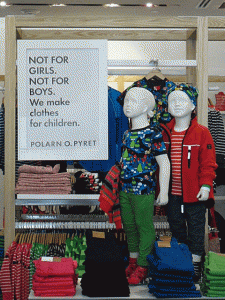
If you have children or are around kids, you know that gender roles start early. The gender of a new baby is speculated about from the moment the announcement is made and toys, clothes, room decorations and even plates and cups all come with some pretty strong gender roles built in. Clothing company Polarn O. Pyret is at the forefront of changing that approach with collections that are simply ‘for kids’ without designations of which child should or could wear a certain item. On their website they explain their position as being both practical and economical. “As a clothing manufacturer, we want to make it our responsibility to offer an alternative to clothing that is based on gender. There is really no reason to design different models and fits for small boys and girls since there is no great difference in the way their bodies are shaped. […]We primarily want to offer children and parents freedom of choice. Each collection is first planned based on the UNI concept, after which we develop clothes that are more gender oriented. […] Rather than feed the throw-away culture of disposable fashion, our clothes stay in the family.”
1. Rena (Rusty) Kanokogi, Judo Champion
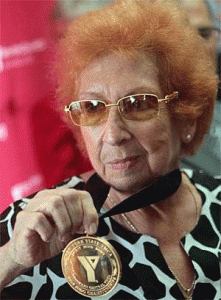
When Rena began learning Judo from a friend in the early 1950s she had no way of knowing what a force she would become in the world of competitive Judo and women’s equality. She did, however, soon realize that opportunities for women to compete professionally were few and far between so she tried to pass as a man in order to compete in the 1959 New York State YMCA judo championships. She was initially successful and won the tournament but was eventually found out and stripped of her medal. Rea returned home and, like a storyline right out of a martial arts movie, swore to get her medal back. She travelled right to the source, showing up at the world famous Kokodan Institute in Japan and became the first woman permitted to train there. She returned home and spearheaded the campaign to include women’s judo competition in the Olympic Games. She went on to become the first woman to achieve the rank of 7th dan in judo and. In 1991, was inducted into the International Women’s Sports Hall of Fame. Kanokogi was a commentator during the 2004 Summer Olympics and, in 2008, she received one of Japan’s highest civilian honors, the Order of the Rising Sun, 4th Class (Gold Rays with Rosette). Then, finally in 2009, 50 years after being stripped of her YMCA medal, the New York YMCA awarded her a medal for her lifetime of work.

